What Causes Sciatica?
The sciatic nerve is the main nerve that communicates with the legs. The sciatic nerve is formed by the connection of multiple smaller nerves that all leave the spinal cord through the lumbar spine (lower back). The role of the sciatic nerve is to communicate information from the brain to the legs (causing movement) and information from the legs back up to the brain (usually pain). Sciatica refers to mechanical irritation of the sciatic nerve.
Sciatica refers to mechanical irritation of the sciatic nerve.
In most cases, the sciatic nerve is pinched by a bone, muscle or bursa. The pinching of the nerve interrupts the signal that the sciatic nerve is sending to the brain and the brain usually interprets an interrupted signal as pain (ouch!)
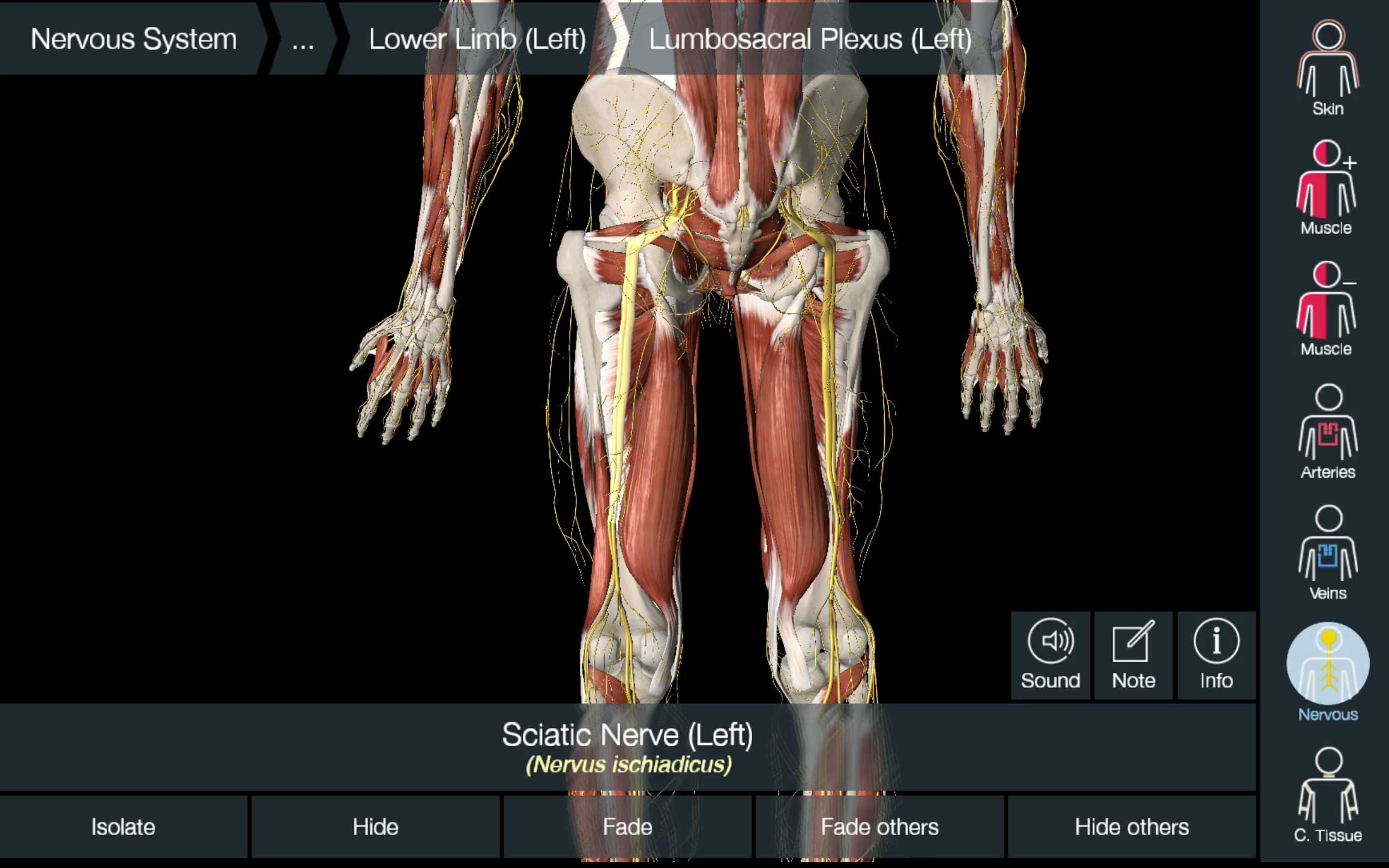
Here’s an analogy that helps understand what is happening:
Imagine that you are in the garden watering your plants.
All of a sudden, the water stops coming out of the hose.
In that moment, what are your thoughts?
“Something is wrong”
That’s what happens in the brain as a result of sciatic nerve irritation. Panic. PANIC! Pain. Ouch.

In the analogy above, you have the luxury to walk back along the path of the hose, find the kink, undo it and continue watering your beautiful garden (as if someone could actually enjoy gardening 😴 😂). Unfortunately, the brain does not have the luxury to actually go and check what it is that’s causing the signal disruption. That’s what we’re here for!
The Symptoms of Sciatica
Sciatica is one of the most challenging conditions to resolve. The reason is that many people have different types of symptoms that can be all caused by the same issue.
Some of the most commonly reported symptoms of sciatica amongst our clients are:
• Lower back pain
• Pain in the buttocks
• Hip pain
• Severe calf pain
• Tingling or numbness down the legs (usually on the outside)
• Tingling or numbness in the toes and base of the foot
• Pain after sitting for a long period of time
• Pain after standing for a long period of time
• Pain when getting up from a chair
• Pain that’s worst in the morning and eases throughout the day
• Inability to sleep on one side due to hip pain
• Very sharp sudden, knife like pain
That’s a pretty long list! There are more symptoms but those are the most common. Most people describe a combination of a few of the symptoms listed above. Usually, sciatica does not start all of a sudden, but it gradually progresses from a dull, infrequent, minor pain to a more severe, niggling, lasting pain.
By the time we see them, most people have already been experiencing symptoms of sciatica for 3 months or longer.
Why a Lumbar X-Ray or CT Scan is not the right diagnostic test
The most common investigation that doctors undertake (at least here in Australia) in relation to the above mentioned sciatica symptoms is a lumbar spine X-Ray or CT scan.
In most older (>40 year old) people with the typical sedentary lifestyle, the scans will come back with a diagnosis of disc degeneration, disc bulge, disc herniation, disc stenosis or similar. Now, don’t get me wrong. Those are real conditions that require an appropriate treatment plan, but, they are not likely to be the cause of sciatica. In theory, this opinion may be considered controversial, but in practice the reality is that:
Disc disease and sciatica can both caused by the same issue but that doesn’t necessarily mean one caused the other.
The reason why this paragraph is here is because many people who suffer from sciatica will be lead down the wrong road towards fixing the disc issue through surgery, medicine, cortisone injection, spinal manipulation or other passive therapy rather than take the steps that actually diagnose and solve the problem at the root cause.
So, What Causes Sciatica?
In most cases, sciatica is caused by a muscular deficiency.
The actual muscle in question can vary greatly, but in the large majority of cases we have seen, the cause (and solution) comes down to a muscular weakness, poor muscular endurance or inefficient movement patterns.
As I keep saying, the actual answers can vary. That’s why it’s important to have a great Physiotherapist or Exercise Physiologist on your side to help you diagnose your specific sciatica trigger. But, here is a list of the most common causes of sciatica.
1. Weak Abdominal Muscles or Weak Core
This is a key point that goes back to what I said in the last section. Weak abdominal muscles is an issue that affects the lumbar discs and can result in disc degeneration or disc bulging. At the same time, weak abdominal muscles means that the spine isn’t able to resist the downward pull of gravity causing the discs to compress, disc height to be lost and subsequently pressure on the nerve roots that form the sciatic nerve.
2. Weak Gluteal Muscles
The gluteal muscles (“glutes”) purpose is to extend (straighten) the hips.
When we are sitting down, the gluteal muscles don’t need to do any work. The pelvis often rolls into the wrong position and make a negative impact on your posture. Prolonged poor posture puts an unnecessary strain on the sciatic nerve resulting in sciatic pain. Glute weakness is usually also responsible for sciatica pain when you stand up after an extended period of sitting. This occurs because the muscles have switched off and aren’t ready to fulfil their duties to straighten the hips and get you out of the chair.
3. Glute Medius & Hip Bursitis
These two structures don’t always go hand in hand but in most cases they are very closely intertwined.
The glute medius’ job is to stabilise the hip whenever you are standing on one leg (for example, walking). Every step you take, the glute medius keeps the standing hip steady for the split second when you are swinging the other leg forward in normal walking gait. In some cases, the glute medius doesn’t activate at all, causing a slight wobble on every step and increasing the friction on the bursa beneath it and the sciatic nerve.
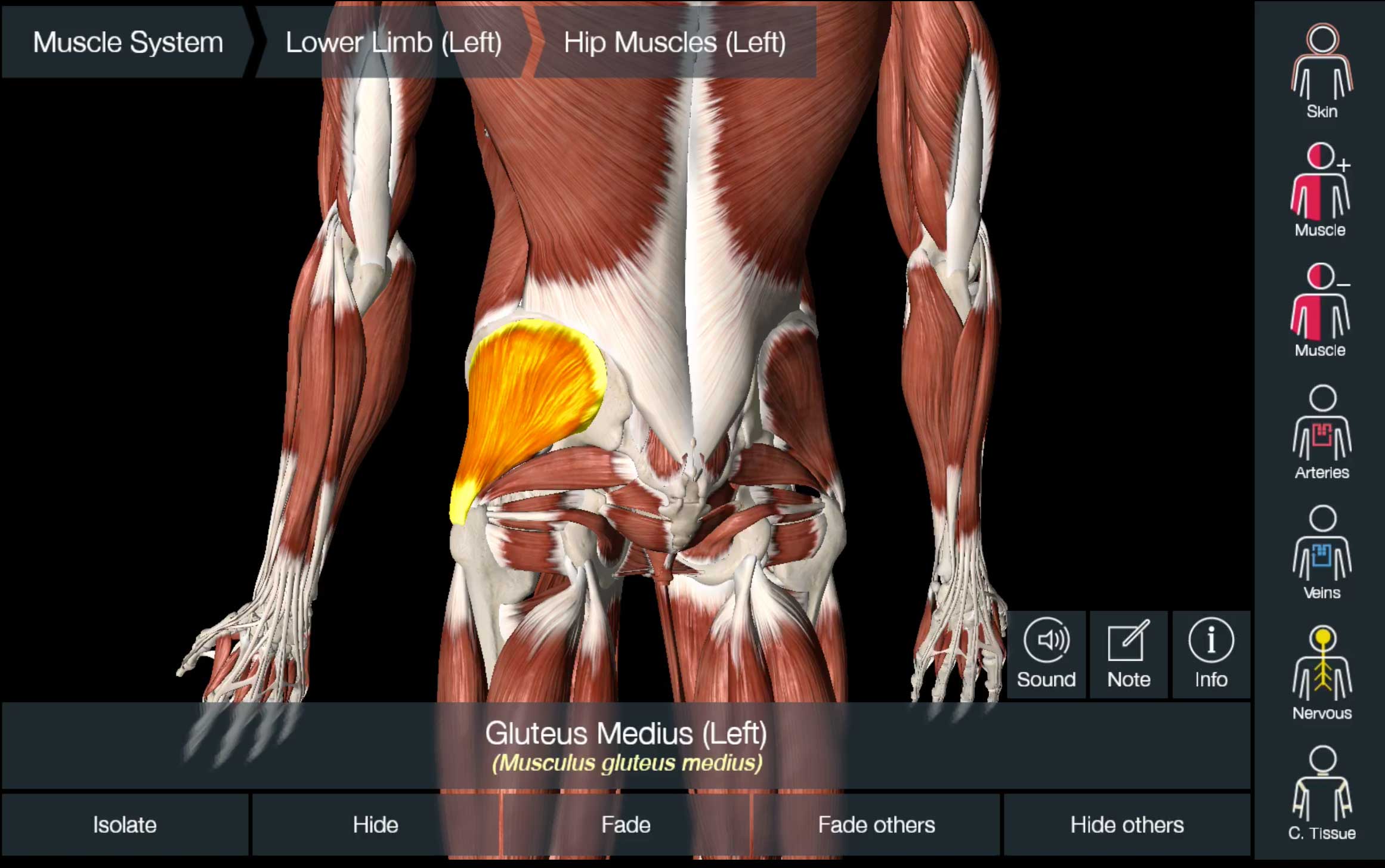
Another issue arises when the glute medius activates but does not have enough endurance (stamina). This usually manifests after going for a long walk. At some point during the walk the glute medius fatigues and gives up. As with any muscle that reaches fatigue, the glute medius tightens up and shortens. This increases pressure on the tendon which is held away from the bone by a fat pad known as a bursal sack. When the tendon tightens and causes the irritation on the bursa, there is inflammation (increased blood flow and swelling) which causes the structures to take up more space and increases pain locally at the hip joint. Additionally, the enlarged structures can result in nerve irritation and sciatica symptoms to be brought on.
4. Hamstring Weakness and/or Tightness
With our sedentary lifestyles in the modern era, increased sitting and a lack of exercise is causing increased tightness and weakness in the hamstring muscles (weakness and tightness usually go hand in hand). Tight hamstrings can result in mechanical pressure on the sciatic nerve which runs through the hamstring muscle as well as causing a narrowing of the hip joint and increasing some of the other issues listed above. Hamstring weakness is another common issue which causes the hamstring to become less involved in walking & standing/sitting from a chair which affects the joints and other muscles in the region.
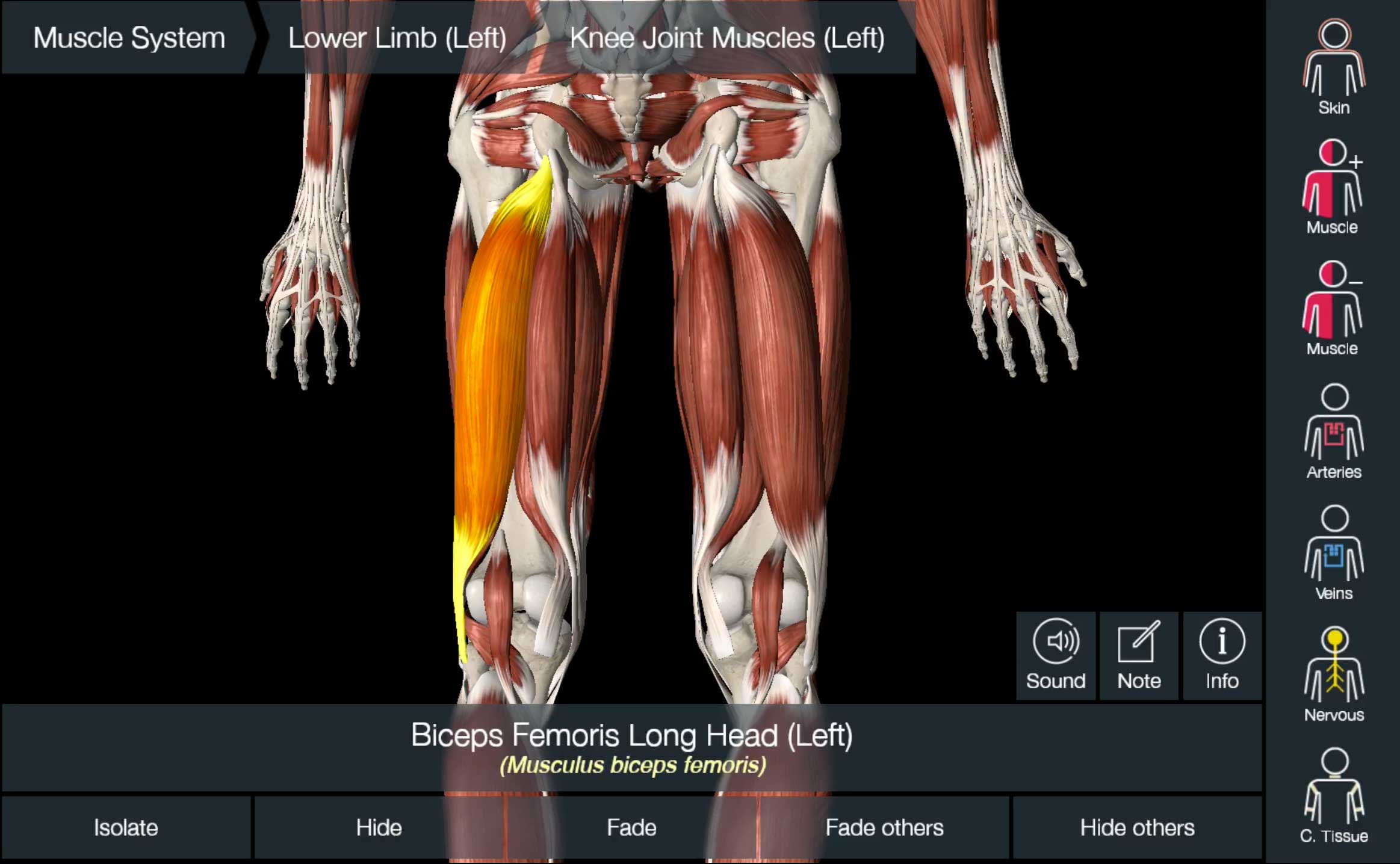
The main lesson here is that sciatica is not usually caused by a random event.
There is a slow and gradual decline in muscle strength, endurance or activation which slowly affects the entire system increasing friction and compression on the sciatic nerve resulting in pain.
How to Treat Sciatica
1. Diagnose the true cause
This is the most crucial step and is very difficult to do on your own. We have created a free guide for diagnosing the cause of your sciatica but we recommend finding yourself a good Physiotherapist or Exercise Physiologist (come and see us, we’d love to help) who can conduct an assessment and investigate the true cause or causes of your pain.
2. Get stronger
Once you know what areas are likely contributing to your sciatica pain, you’ll have to work on those weaknesses to bring them up to average (or way above average). It can take a while for a muscle to start getting stronger, especially if it’s not used to building strength. We usually see about a 3 week delay between commencing focused strengthening exercises and seeing noticeable improvements in strength and reductions in pain, so stick with it!
3. Build endurance
While strengthening your weaknesses, invest some energy into increasing your muscular endurance. This usually entails doing more repetitions in quick succession or holding a muscle contraction for a longer period of time.
4. Get active
The easiest way to prevent sciatica (and many other painful conditions) is to build activity into your everyday life. Getting active means a lot more than just going for a walk every day. You need to ensure that all your muscles are maintaining (at the least) or increasing in strength over time. The only way your muscles will get stronger is if they are exerted above their current ability in order to get stronger. Going to the gym, playing sport or doing a variety of exercises is the best way to ensure that your body is set up for a lovely pain-free life.
Conclusion
• The sciatic nerve is the main nerve that connects the lower leg with the brain.
• Sciatica refers to mechanical irritation of the sciatic nerve.
• The brain interprets sciatica nerve irritation as pain, because it cannot actually go and check what is disrupting the signal from the legs.
• Sciatica symptoms can vary from person to person making it one of the most challenging to resolve.
• Don’t just settle for a lumbar x-ray or CT scan as the only way to diagnose the cause of your sciatica pain
• Sciatica is usually caused by muscle weakness, lack of endurance or a lack of activation
• The treatment for sciatica involves diagnosis, strengthening, endurance
• Preventing sciatica involves getting and staying physically active and strong
Questions?
Write them in the comments below or click the chat icon in the bottom right hand corner to speak with us privately.

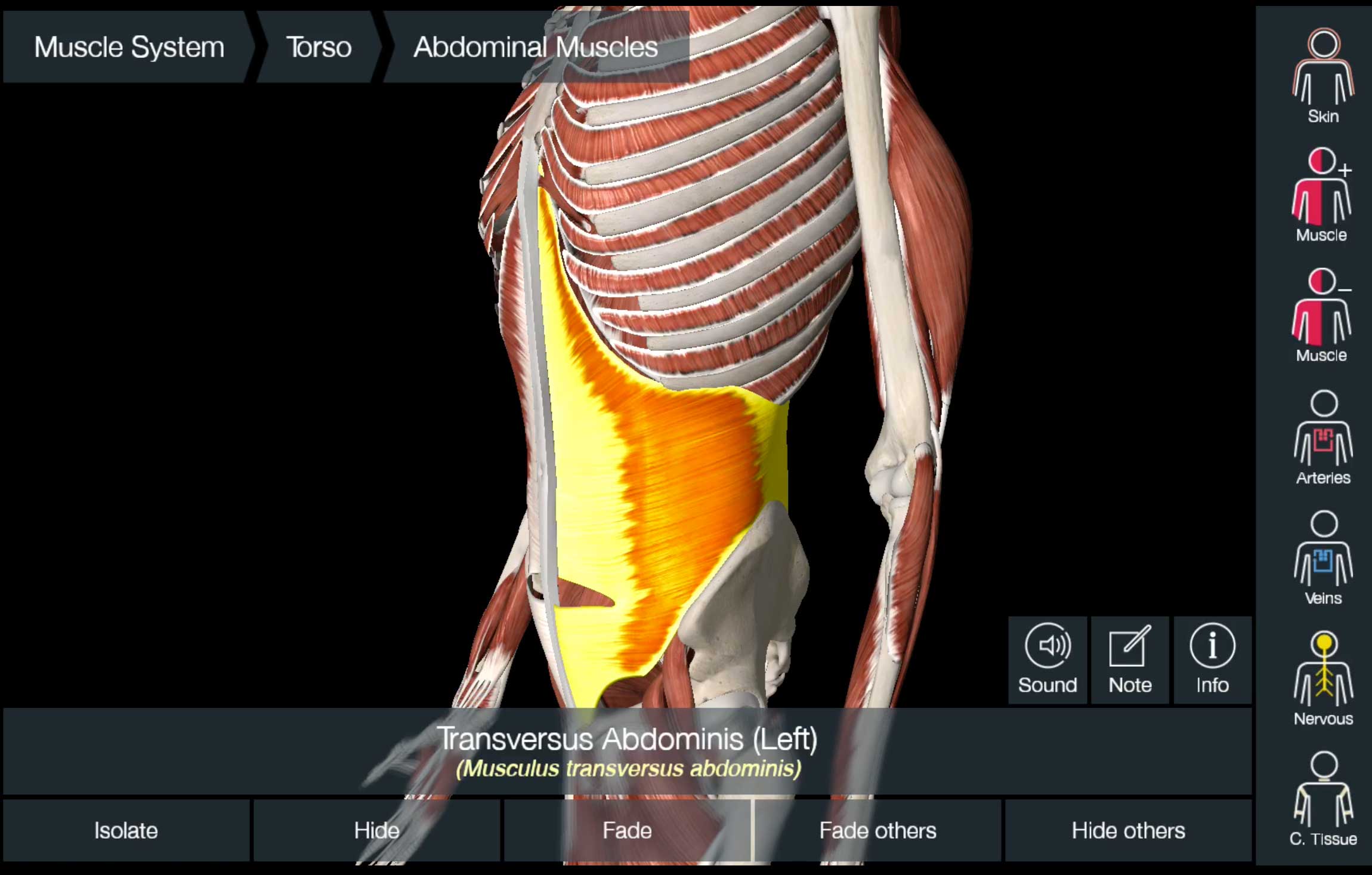
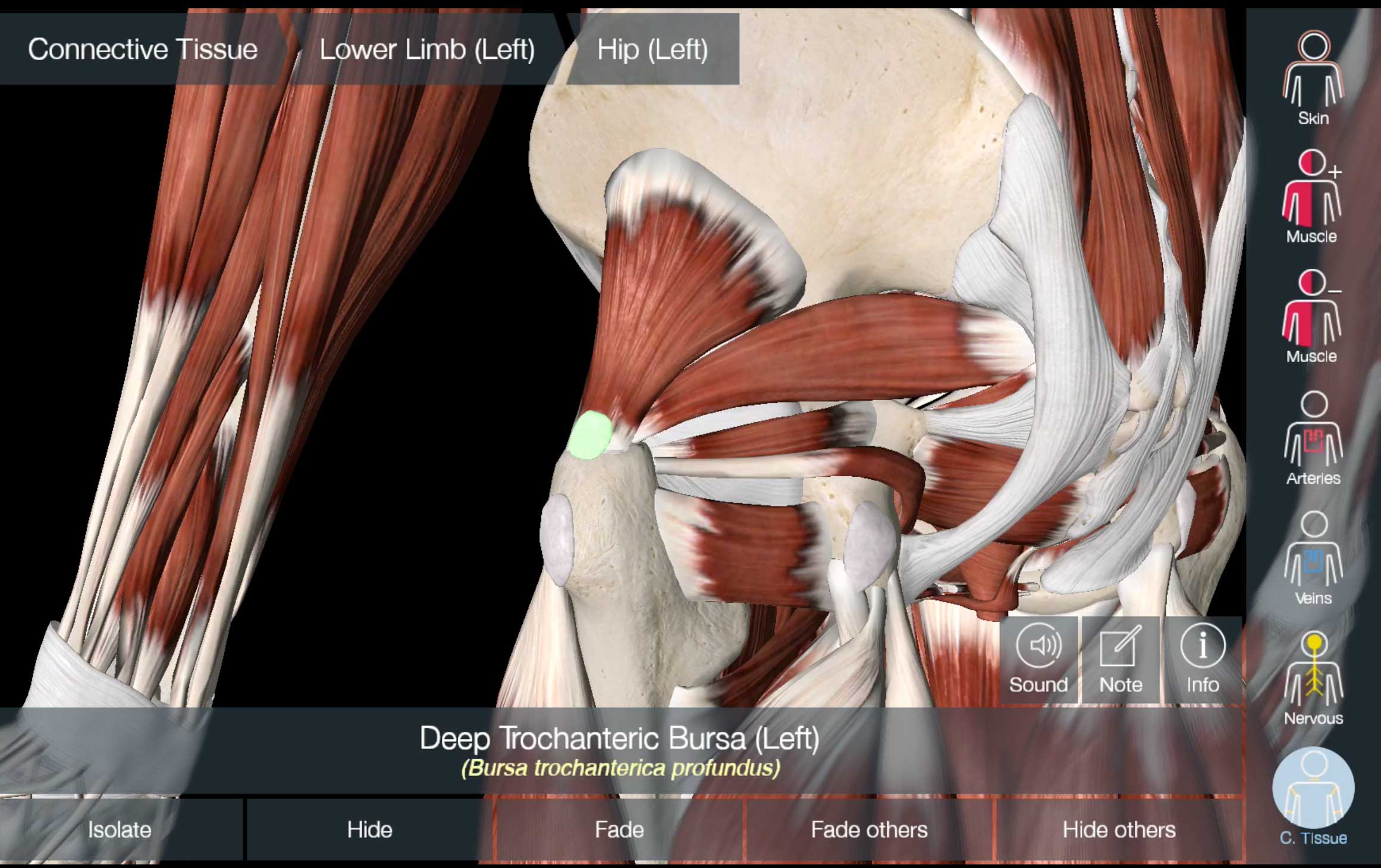
No Comments